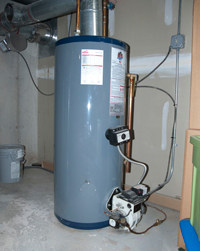Key Care Strategies for Your Home's Hot Water System
Key Care Strategies for Your Home's Hot Water System
Blog Article
The article following next pertaining to What Kind of Maintenance Do Water Heaters Need? is highly stimulating. Don't skip it.

Hot water is essential for daily comfort, whether it's for a refreshing shower or washing dishes. To ensure your warm water system runs successfully and lasts much longer, normal upkeep is crucial. This post supplies functional ideas and understandings on exactly how to preserve your home's warm water system to prevent interruptions and expensive repair work.
Introduction
Maintaining your home's hot water system could seem difficult, however with a few simple steps, you can guarantee it runs efficiently for many years to find. This guide covers everything from recognizing your warm water system to do it yourself maintenance ideas and knowing when to call in professional aid.
Value of Preserving Your Hot Water System
Regular upkeep not just prolongs the lifespan of your warm water system yet also ensures it operates successfully. Disregarding upkeep can result in decreased performance, higher energy costs, and also premature failing of the system.
Indicators Your Hot Water System Needs Upkeep
Understanding when your hot water system requires interest can avoid significant problems. Look out for indicators such as irregular water temperature, weird sounds from the heater, or corroded water.
Flushing the Water Heater
Purging your water heater gets rid of sediment buildup, boosting efficiency and lengthening its life.
Monitoring and Replacing Anode Rods
Anode poles prevent deterioration inside the storage tank. Inspecting and replacing them when broken is important.
Complex Issues Calling For Expert Aid
Examples consist of major leakages, electrical problems, or if your hot water heater is regularly underperforming.
Regular Expert Upkeep Advantages
Specialist maintenance can consist of comprehensive examinations, tune-ups, and guaranteeing conformity with safety criteria.
Inspecting and Changing Temperature Settings
Readjusting the temperature settings makes certain optimal efficiency and safety.
DIY Tips for Upkeep
You can execute a number of upkeep tasks yourself to maintain your warm water system in top condition.
Checking for Leakages
Routinely examine pipelines and links for leaks, as these can lead to water damage and greater costs.
Understanding Your Warm Water System
Prior to diving into maintenance jobs, it's handy to understand the basic elements of your warm water system. Typically, this includes the hot water heater itself, pipelines, anode rods, and temperature controls.
Regular Monthly Upkeep Tasks
Regular monthly checks can assist capture small issues before they intensify.
Checking Stress Relief Valves
Evaluating the stress safety valve guarantees it operates correctly and avoids extreme stress build-up.
Insulating Pipes
Insulating hot water pipelines minimizes warmth loss and can conserve power.
When to Call a Professional
While DIY maintenance is useful, some issues need expert know-how.
Verdict
Normal upkeep of your home's warm water system is essential for efficiency, longevity, and cost savings. By following these suggestions and understanding when to seek expert assistance, you can guarantee a reputable supply of warm water without unexpected disruptions.
How to Maintain an Instant Hot Water Heater
Before tinkering with your hot water heater, make sure that it’s not powered on. You also have to turn off the main circuit breaker and shut off the main gas line to prevent accidents. Also turn off the water valves connected to your unit to prevent water from flowing into and out of the appliance. 2. When you’re done, you have to detach the purge valves’ caps. These look like the letter “T†and are situated on either side of the water valves. Doing so will release any pressure that has accumulated inside the valves while at the same time avoid hot water from shooting out and burning your skin. 3. When the purge valves’ caps are removed, you have to connect your hosing lines to the valves. Your unit should have come with three hoses but if it didn’t, you can purchase these things from any hardware or home repair shops. You can also get them from retail stores that sell water heating systems. Read the user’s manual and follow it to complete this task properly. When the hosing lines are connected, open the purge port’s valves. 4. You should never use harsh chemical cleaners or solutions when cleaning your unit. Make use of white vinegar instead. It should be undiluted and you’ll probably use about 2 gallons. 5. Now flush your water heater. This task should probably take about 40 minutes. We can’t give you specific directions for this because the procedure is carried out depending on the type, model and brand of your heater. With that being said, refer to the user’s manual. 6. When you’re done draining the unit, you have to turn off the purge port valves again. Remove the hosing lines that you earlier installed on each of the water valves. Put the valve caps (purge port) back in their respective places and be very careful so as not to damage the rubber discs that are found inside these caps. 7. Now that everything’s back in place, check your user’s manual again to find out how to reactivate your water heating system. 8. Once it is working, turn one of your hot water faucets on just to let air pass through the heater’s water supply pipes. Leave the tap on until water flows smoothly out of it. https://www.orrplumbing.com/blog/2014/september/how-to-maintain-an-instant-hot-water-heater/

We were introduced to that write-up about What Kind of Maintenance Do Water Heaters Need? from a friend on another web property. Make sure you take the time to share this page if you appreciated it. Thanks for being here. Revisit us soon.
Click Here Report this page